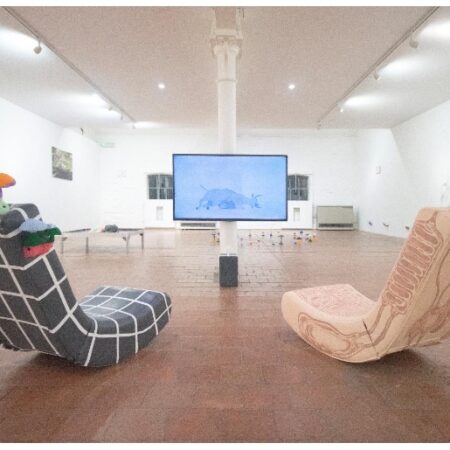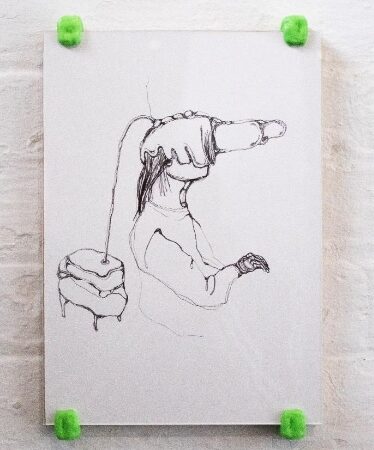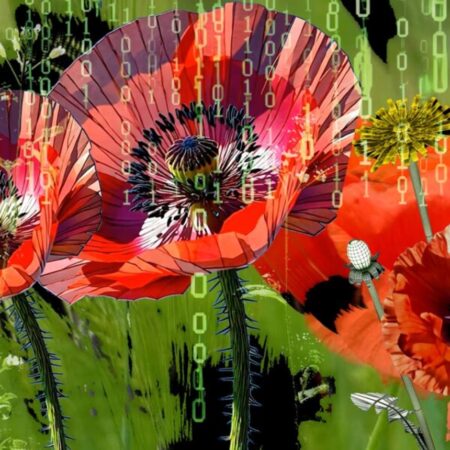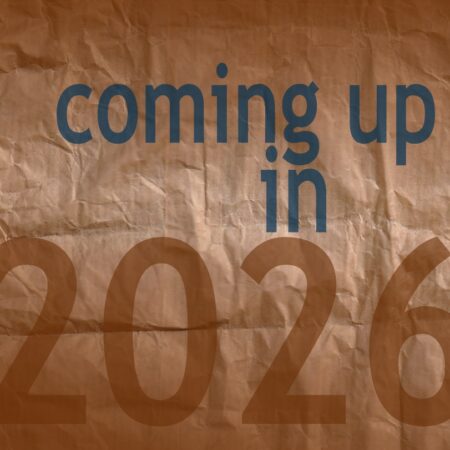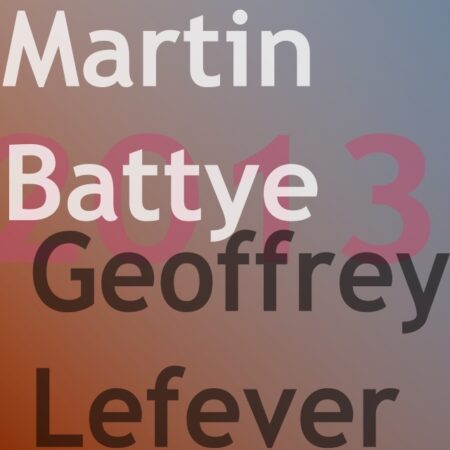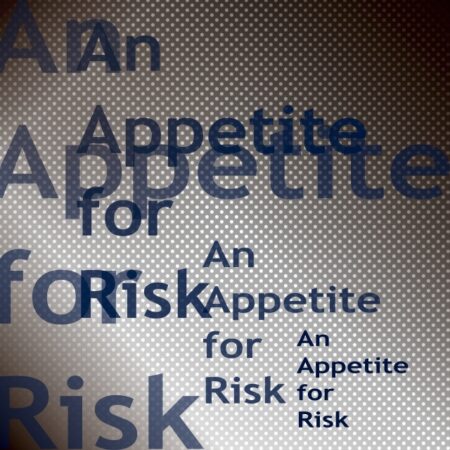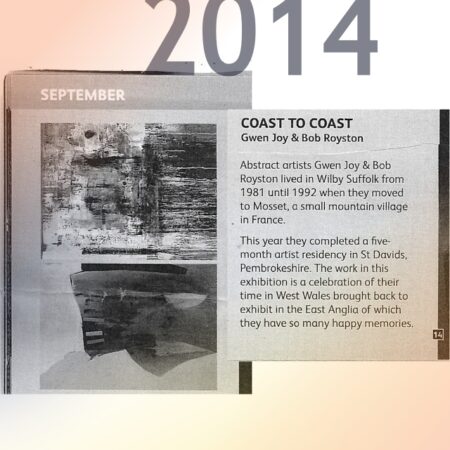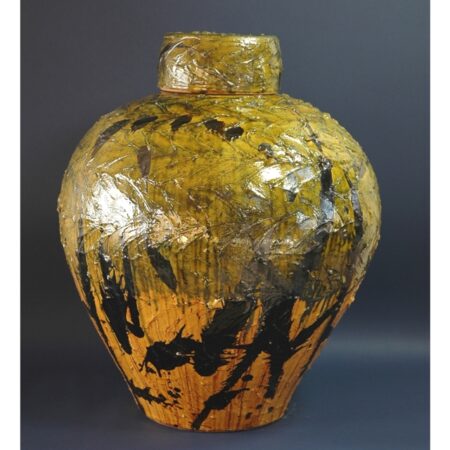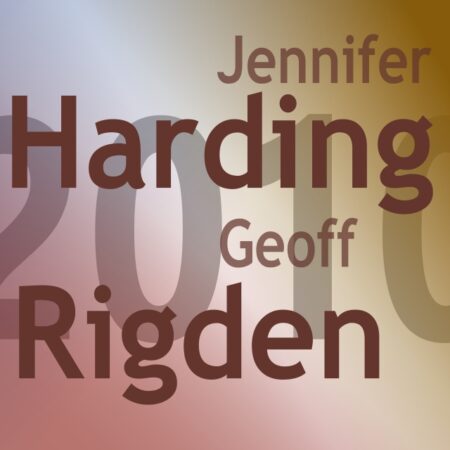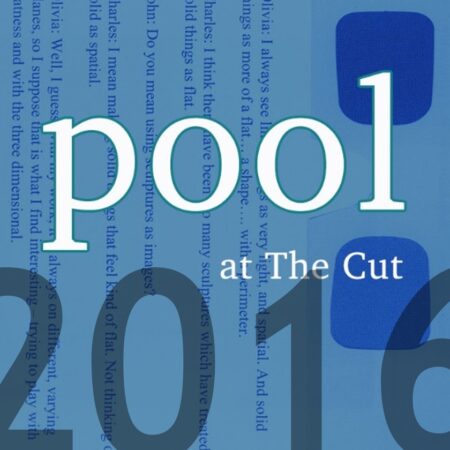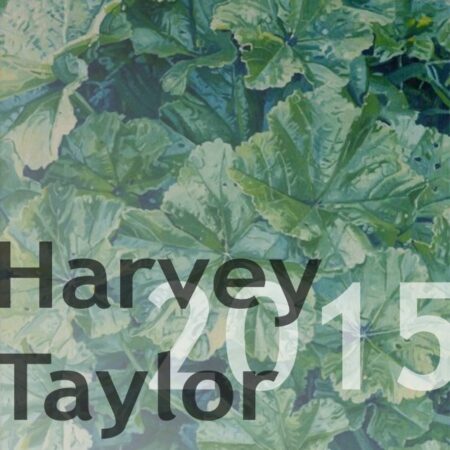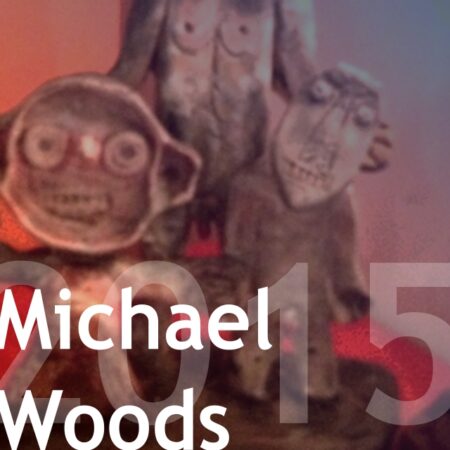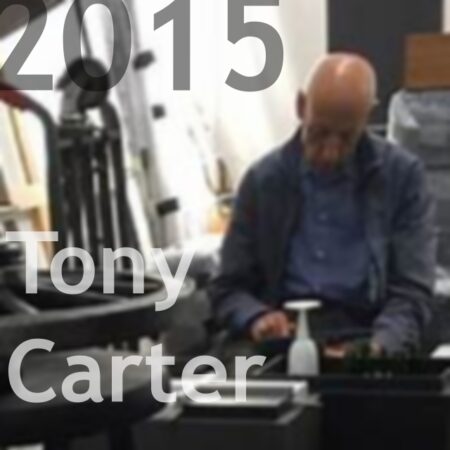
Logging Off
Date: February 2024
Exhibition/Show Type:
Group
Media: Digital, Drawing, Installation, Mixed Media, Multidiscipline, Sculpture, Video
Exhibition Description
Logging Off is a collaborative duo exhibition exploring ideas surrounding our present, hyperconnected world, and our collective unease for the near future.
Logging Off, a duo exhibition of new work by Bob Bicknell-Knight and Rosa-Maria Nuutinen, exploring the seductive nature of video games worlds, digital addiction, climate collapse, apocalypse anxieties and 24/7 hypercapitalism.
The exhibition reflects upon how the videogames we play are created, how our lives are becoming increasingly disconnected because of new technologies and a general feeling of malaise towards the contemporary moment.
The exhibition includes new paintings, drawings, sculptures, installations and films throughout The Cut.
The artist’s own documentation of the exhibition is here.
On the ground floor, stairwell and second floor of The Cut are a series of works on canvas by Bicknell-Knight. Collectively titled Towards A Consensual Hallucination, the simple line drawings and paintingsdepict distorted figures in varying states of emotion. The ongoing series was partially created using DALL-E 2, a commercial artificial intelligence (AI) system that enables users to create new images with text to graphics prompts.
Bicknell-Knight fed the AI with images of patent drawings for VR devices, with the image outcomes being his own abstracted patents of future technologies, created in part by an all-seeing AI predicting the potential futures of this technology. The image outcomes were then edited by Bicknell-Knight and transcribed onto the canvas.

Throughout The Cut are a series of drawings and sculptures by Nuutinen, exploring the juxtaposition of the physical and the digital, questioning our collective relationship towards technology by asking how new inventions mould our society and personal experiences.
Through her work Nuutinen investigates how people are gradually living larger portions of their lives in the online space. She questions what the world will look like in the future as technology becomes increasingly inexpensive and accessible, as the
difference between the physical and the digital becomes progressively blurred.
Nuutinen’s drawings around The Cut depict anonymous characters and their absent bodies. They are empty vessels, victims
to the silent abuse of their hosts who are addicted to the digital world. Nuutinen’s drawings throughout the exhibition are displayed in custom frames made from MDF and 3D printed parts.

The works by Nuutinen included in Logging Off imagine a future where technology has advanced to the point where humans have grown apart from each other, distancing themselves from physical reality by using biomechanical super computers. These super computers provide massive local area network (LAN) gatherings, where users can log on for extended online experiences.
Computer (2024), a large- scale sculpture hanging from the ceiling on the second floor, is one of these communally used super computers, where three helmets are hanging, ready to donned by its users. The work is a suggestion that, in the future, people will gather for large online sessions, spending time in virtual reality rather than in our physical world. Participants will be connected to an imagined high powered future computer via VR-headsets, enjoying limitless access online without any disruptions

Another series of paintings in the exhibition by Bicknell-Knight which can be seen on both the ground and second floor of The Cut investigates how video games are created, the climate crisis and our 24/7 lives.
The works are hybrid paintings, beginning as digitally fabricated images within the video game development software Unity. The images are then printed onto canvas, stretched and painted onto with acrylic paint, with the offline artist’s hand interacting with the original digital image. The painting method explores the tension between the digital and physical sides of Bicknell-Knight’s practice and is a collaboration between his digital and physical working methods.

The paintings in the series by Bicknell-Knight depict several animals at the precise moment that they’re falling to the floor, never to rise again, accompanied by words associated with destruction and decay.
Everything you see in the paintings, from the animals to the trees, has been purchased as a prefabricated video game asset; game objects that are used in multiple places across a given game. The 3D models are usually simple objects with low polygon counts. The use of these models, purchased by game developers rather than being made themselves, is a contemporary coping mechanism
harnessed to accelerate the production process of virtual experiences. The paintings use the idea of the prefab as a vehicle for speaking about how the world is in an unstoppable free fall towards a global climate crisis.
Conversely, Nuutinen’s drawings throughout the exhibition visualise different scenarios where helmet users are logged onto their online experiences. In this dualistic setting, the users’ minds are on their own individual journeys to the different corners of the online world, but their bodies are left hollow and unguarded in our physical domain.
However, like in Nuutinen’s large scale drawing Cuddle Pile (2024), humans are still longing for the touch and physical presence of other physical beings. The characters in the drawing are anonymous but piled up on top of each other, like creatures seeking comfort and warmth in a disconnected world. Their consciousnesses are scattered across the virtual world but their
physical selves keep seeking proximity and togetherness; the essence of human nature.

On both floors of The Cut, several floor and wall-based sculptures by Bicknell-Knight are present; physical reproductions of video game assets, 3D printed and sporadically presented on aluminium structures. The sculptures range from mouldy mushrooms to life-size visualisations of deceased animals, exploring ideas related to the political climate in the UK and our rapidly decaying world. Each
of the sculptures in the series is printed with no perimeter, with the different objects shedding their outer, simplistic armour, to discover the inner beauty and intricacies of these seemingly uncomplicated objects and the ways they’re used within video games.
These sculptures are produced using Polylactic Acid (PLA), a thermoplastic polyester made from plant starch. By producing versions or iterations of both animals and plants in this material, the sculptural works are effectively transformed back into the original natural elements that they are visually depicting.
Like the paintings by Bicknell-Knight in the same series, the sculptures are emblazoned with words associated with destruction and decay, asking the question, at what point do we escalate?
Some of the sculptures sit on structures made from aluminium, referencing autopsy and dissecting tables, covered by vinyl prints which replicate the digital space that creators first encounter when beginning a project in Unity; a grey and white grid



Two films by Bicknell-Knight also inhabit the second floor, utilising the same 3D models of animals present in the paintings and sculptures by Bicknell-Knight within the exhibition.
In Procession (2024) these animals, now animated, are seen walking from one end of the screen to the other in an endless march, towards the future and their own demise.
Final Exit (2024) depicts this more literally, with the same animals repeatedly falling to the digital floor as they are pulled in and out the screen, slicing their bodies to expose their empty innards.
You are invited to sit and watch the films on several customised gamer chairs.
Bicknell-Knight’s grid motif, present in the aluminium structures, is seen here again in his chairs, accompanied by a series of
3D printed sculptures.
Nuutinen’s chairs, on the other hand, depict a rib cage fused with elaborate imagined physical technologies, continuing her overarching narrative of technology being fused to human anatomy to enable longer and seamless online sessions.
Collaborating Artists
Bob Bicknell KnightRosa-Maria Nuutinen







